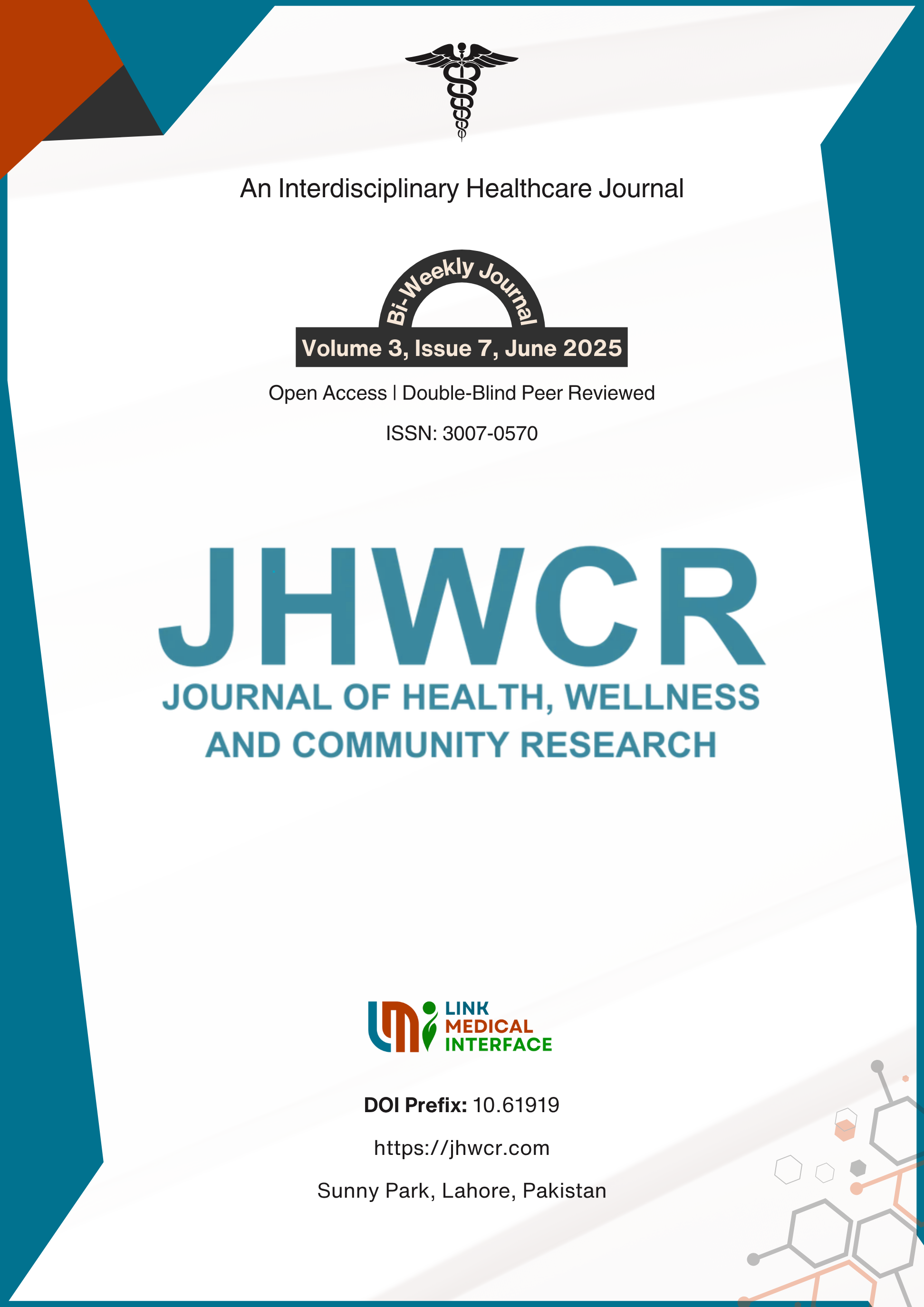Assessing the Prevalence and Contributing Factors of Medication Error in Hospital Setting
DOI:
https://doi.org/10.61919/4vtyp179Keywords:
Medication error, Nursing students, Reporting behavior, Fatigue, Hospital safety, Workload, Patient safetyAbstract
Background: Medication errors remain a significant threat to patient safety, particularly in hospital settings where high workload, inadequate staffing, and insufficient training contribute to compromised medication practices. Novice nurses, including students and interns, are especially vulnerable to such errors due to limited clinical experience and underdeveloped error reporting behaviors. Objective: To assess the prevalence and contributing factors of medication errors among nursing students and interns in a hospital setting, and to explore their perceptions regarding error reporting and related institutional challenges. Methods: A cross-sectional observational study was conducted at Ali Fatima Hospital, Lahore, from February 25 to June 25, 2024. Fifty randomly selected nursing students and interns participated after informed consent. Data were collected using structured questionnaires, Likert scales, and medication safety checklists, focusing on perceived workload, fatigue, staffing levels, training adequacy, and reporting practices. Descriptive and inferential statistics were applied using IBM SPSS Version 26.0. Results: Medication errors were reported by 74.5% of participants, with major contributors identified as excessive workload (74.5%), staff shortages (82%), and fatigue (56%). Only 18% expressed confidence in error reporting. A significant inverse relationship was observed between fatigue levels and reporting comfort. Conclusion: Medication errors among novice nurses are prevalent and closely linked to organizational stressors and weak reporting systems. Targeted institutional reforms are essential to improve safety culture, training, and staff support.
Downloads
Published
Issue
Section
License
Copyright (c) 2025 Journal of Health, Wellness and Community Research

This work is licensed under a Creative Commons Attribution 4.0 International License.


